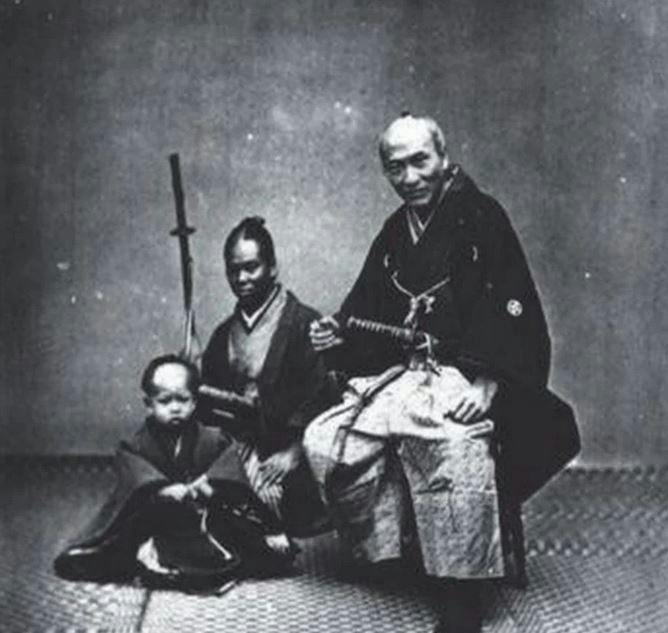In the closing years of the 16th century, Japan, a remarkable figure rose through the ranks of society to become the first black samurai in history. Yasuke, a man of African origin, embarked on an extraordinary journey that saw him forge a lasting place in Japanese lore. His remarkable odyssey, which started in Africa and culminated in Japan, defied racial and societal norms, etching his name on the annals of Japan’s feudal past.
From Africa to Japan
Yasuke’s fascinating tale unfolded when he was seized from his homeland, believed to be Mozambique, and subsequently enslaved in India. In the book “African Samurai: The True Story of Yasuke, a Legendary Black Warrior in Feudal Japan” co-author Thomas Lockley says Yasuke was probably a free man when he met Alessandro Valignano, a prominent Jesuit missionary who asked Yasuke to accompany him to Japan in 1579 as his bodyguard. In those times missionaries were not allowed to carry weapons and with the turmoil in Japan having a bodyguard in your service was a wise decision. Upon arrival in Kyoto, Yasuke’s towering stature and ebony complexion captivated the Japanese, distinguishing him as an enigmatic foreigner.

Captivating Kyoto
When Yasuke arrived in Kyoto, the former capital of Japan, his appearance immediately drew attention. Standing over six feet tall and possessing a strikingly dark complexion, Yasuke captured the curiosity of the public and the ruling elite alike. His unique presence eventually caught the eye of the powerful warlord Oda Nobunaga, who was intrigued by the foreigner’s physical prowess and cultural background.
Oda Nobunaga was the preeminent feudal lord and unifying force in Japan at the time. He quickly forged a strong bond with Yasuke. A story is told that Nobunaga thought Yasuke was covered in black paint and ordered him to be washed. When his skin remained unchanged, Nobunaga threw a welcome party for the visitor.
Ascension of the First Black Samurai
According to historical accounts, Yasuke could speak Japanese and entertained Nobunaga with stories of his homeland and experiences abroad. Impressed by Yasuke’s intellect, strength, and loyalty, Nobunaga eventually granted him the prestigious rank of Samurai. Thus, Yasuke became the first known black Samurai in Japanese history. This ascension signified Yasuke’s trasnformation from an exotic novelty to a revered warrior. A tribute to his exceptional adaptability and the singular rapport he established with the Japanese warlord.
The Samurai Life
As a Samurai, Yasuke’s existence was anything but ordinary. He immersed himself in the disciplines of martial arts, equestrianism, and traditional Japanese weaponry. He internalized the revered samurai code of honor; Bushido. As a valued advisor and protector of Nobunaga, Yasuke assumed a pivotal role in Japan’s volatile political arena.
He valiantly fought at Nobunaga’s side during the Honno-ji Incident of 1582. It was a crucial confrontation involving the deceit and treachery of Nobunaga’s long time ally, Akechi Mitsuhide. As Nobunaga’s forces succumbed to the overwhelming forces of Akechi, the lord elected to perform seppuku. It’s a ritualized form of suicide. It’s intent is to evade capture and be a symbolic message of being in control of his own death. The ritual sometimes also involved a kaishakunin or a ‘second’ who would behead the individual.

It is fabled that after Nobunaga performed seppuku, his deputy decapitated him. Yasuke was then given the responsibility of saving Nobunaga’s head from enemy capture. If Akechi was to have come into possession of the head it would have given him legitimacy as a ruler. According to Thomas Lockley “Yasuke, therefore, by escaping with the head, could have been seen and has been seen as changing Japanese history.”
The Fall and Disappearance
In the wake of Nobunaga’s demise, Yasuke’s fortunes took a downturn. He allied himself with Oda Nobutada, Nobunaga’s son and successor, but was apprehended by Akechi’s forces. Yasuke surrendered his sword instead of performing seppuku. This, in the eyes of Akechi proved that Yasuke was not a true Samurai. Deemed a non-combatant, Yasuke was pardoned from execution and was returned to the Jesuits, subsequently vanishing from historical records.
Lessons Learened
Yasuke’s tale offers lessons for us today, embodying the power to overcome racial and cultural challenges to reach remarkable heights. His experiences illustrate how someone can adapt and contribute to a foreign culture while maintaining their distinct identity. Yasuke’s journey emphasizes the value of welcoming diversity. His unique perspective and abilities were essential to his role as a samurai and his service to Nobunaga.
The Enduring Legacy
Recently, Yasuke’s life has ignited a surge of interest, inspiring books, comics, anime, and an impending live-action Netflix series. This rejuvenated fascination demonstrates the enduring appeal of his story to contemporary audiences and the significance of a narrative that defies traditional norms. Hiss saga serves as a powerful testament to the transformative capacity inherent in cross-cultural interactions and the unyielding human potential for valor, commitment, and perseverance.
“With destruction there is no creation…there is no change.”
Oda Nobunaga



